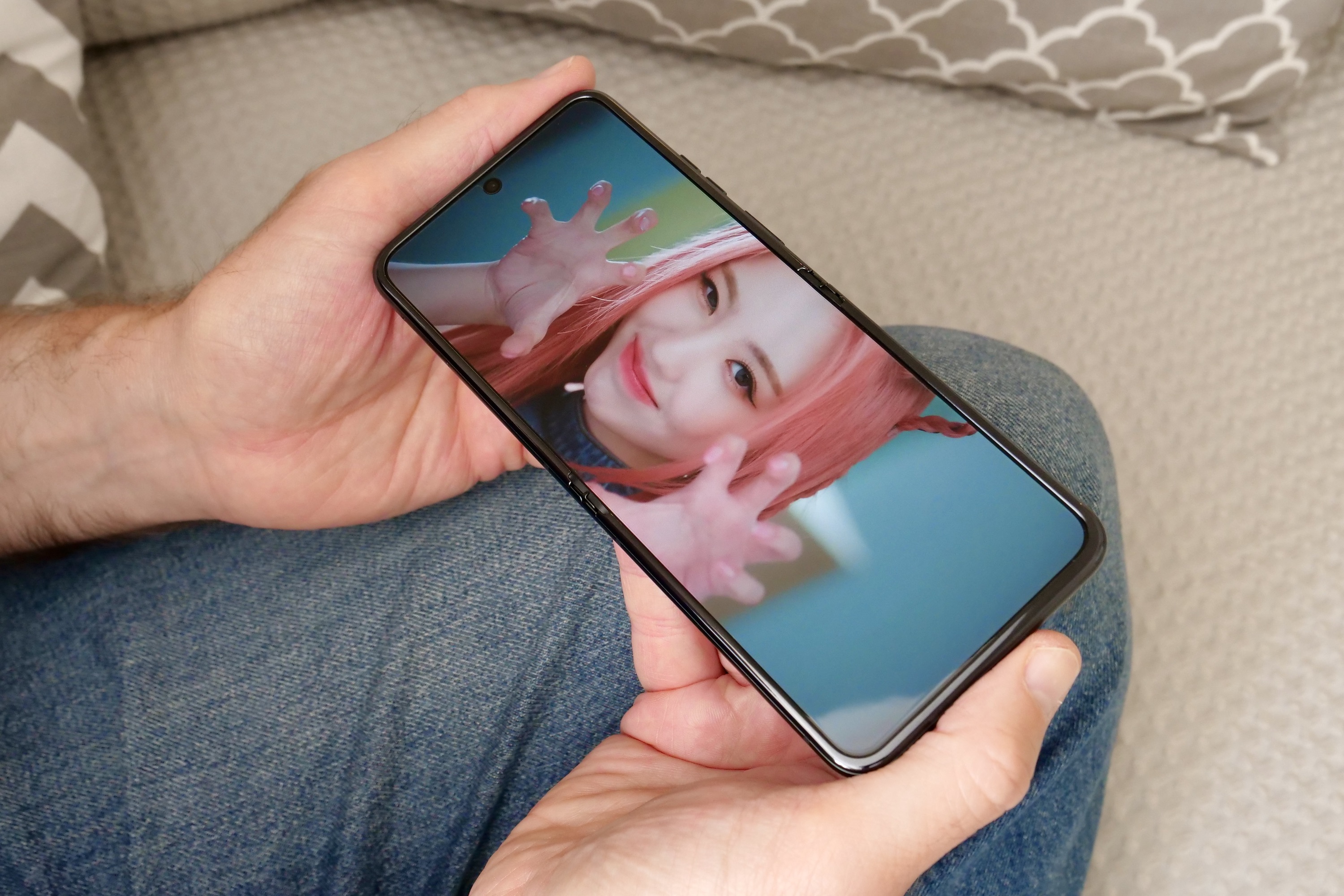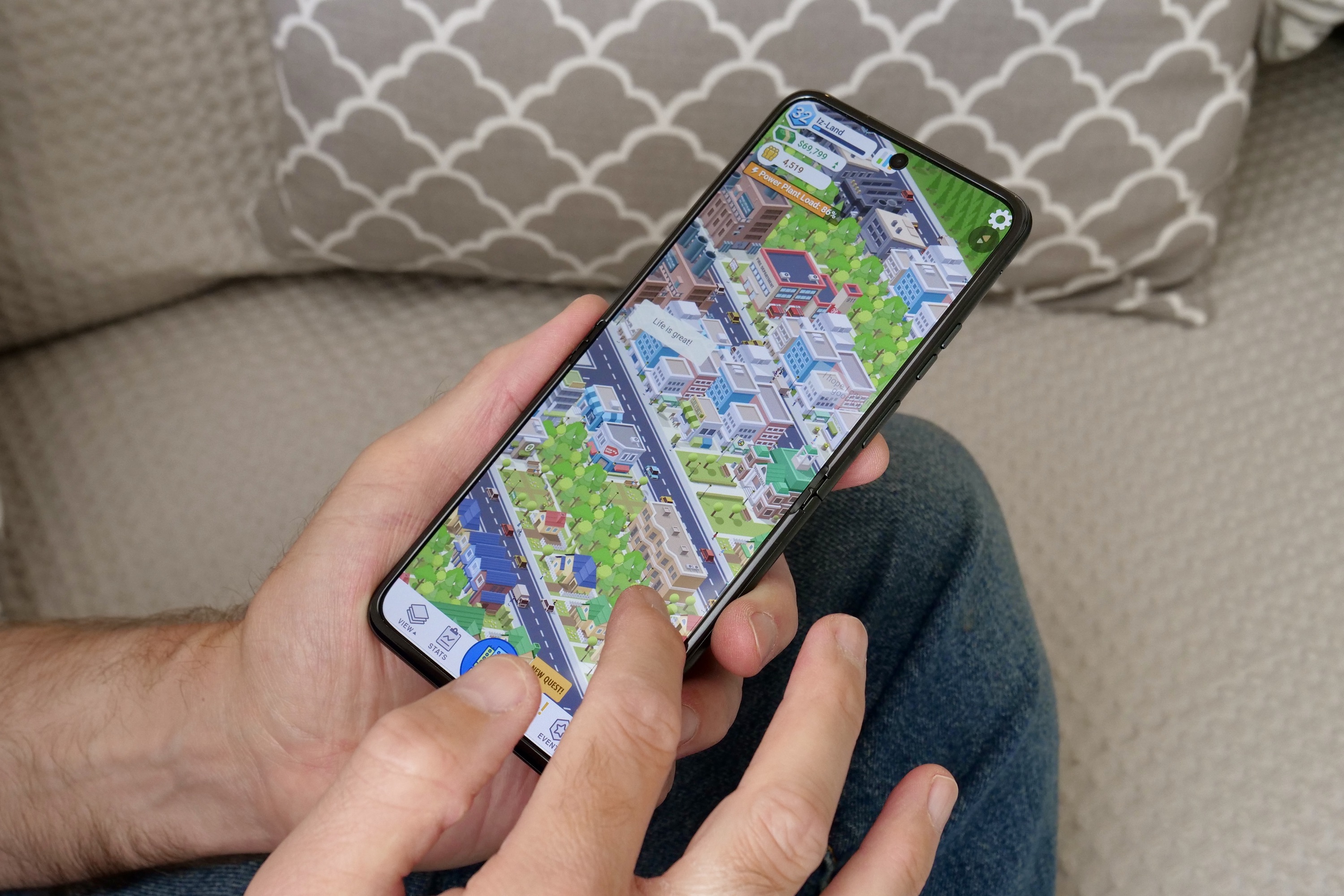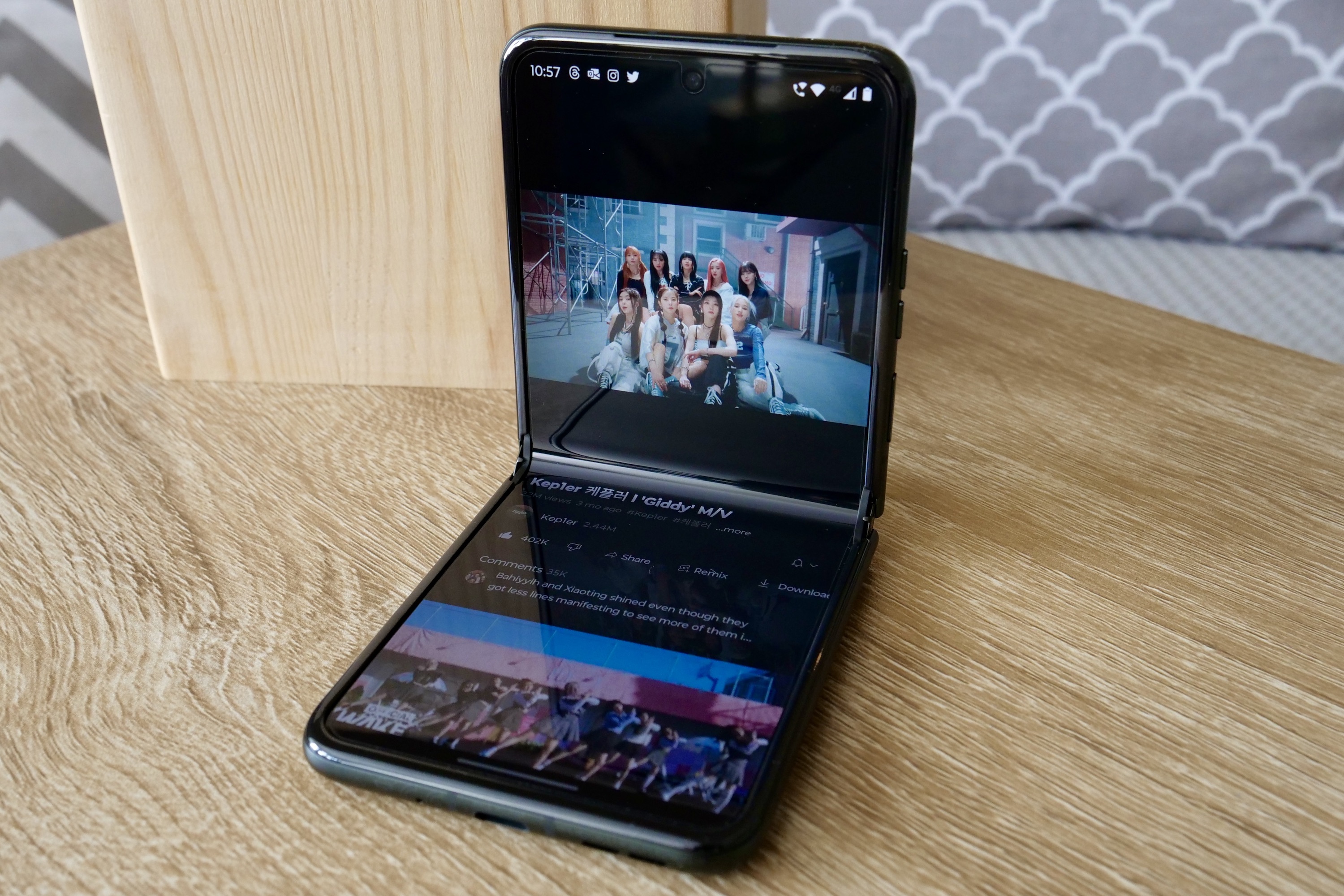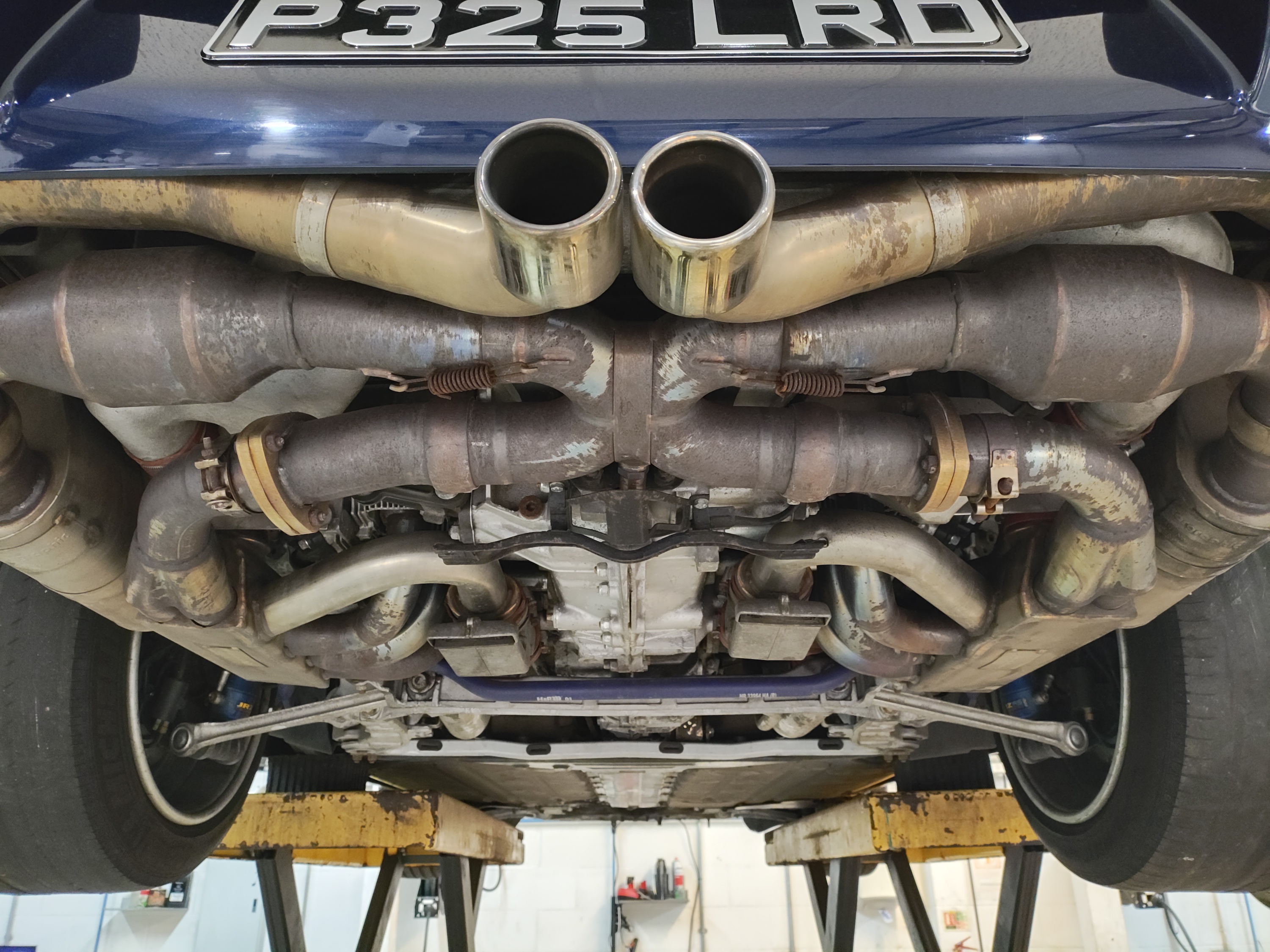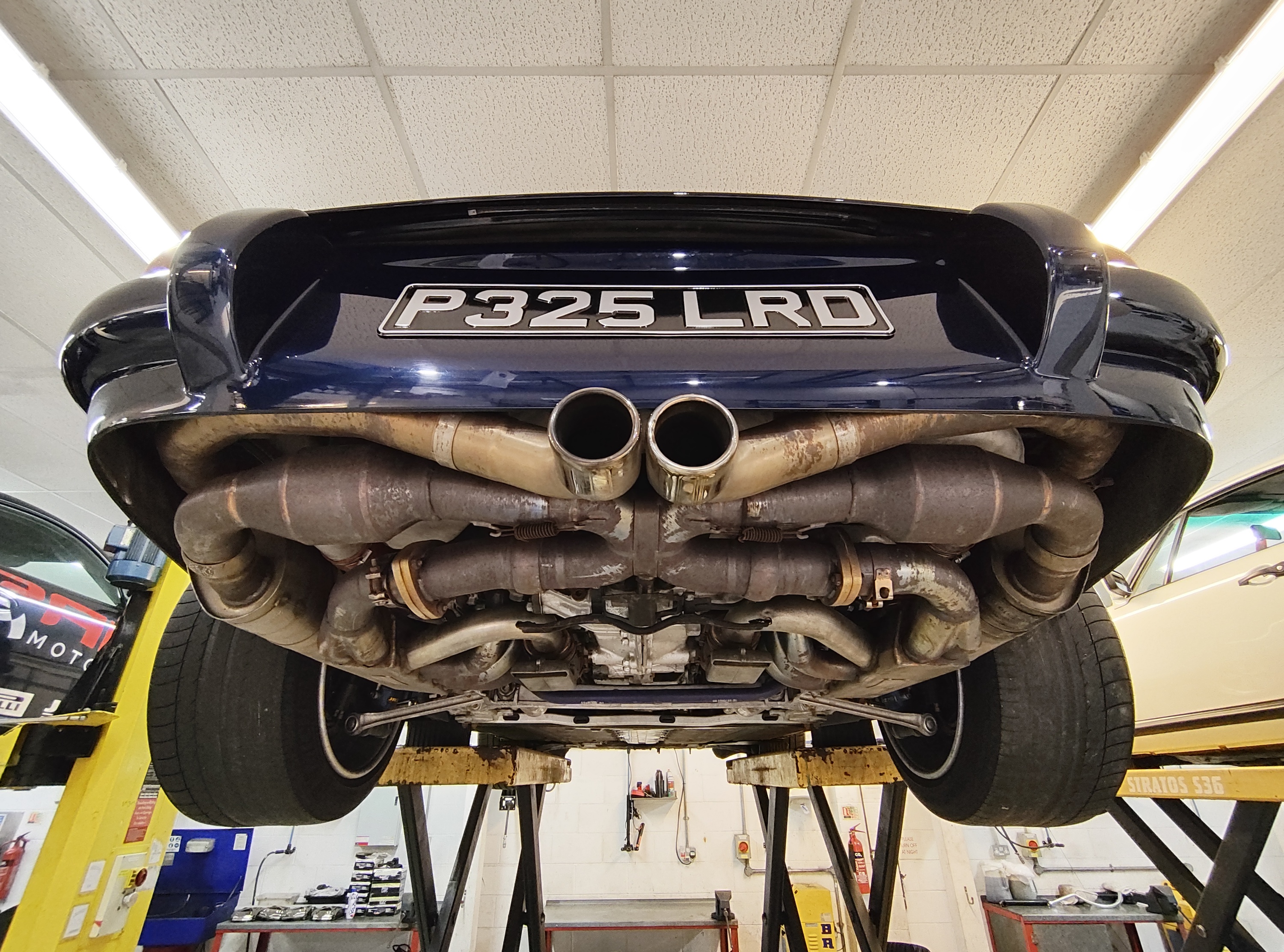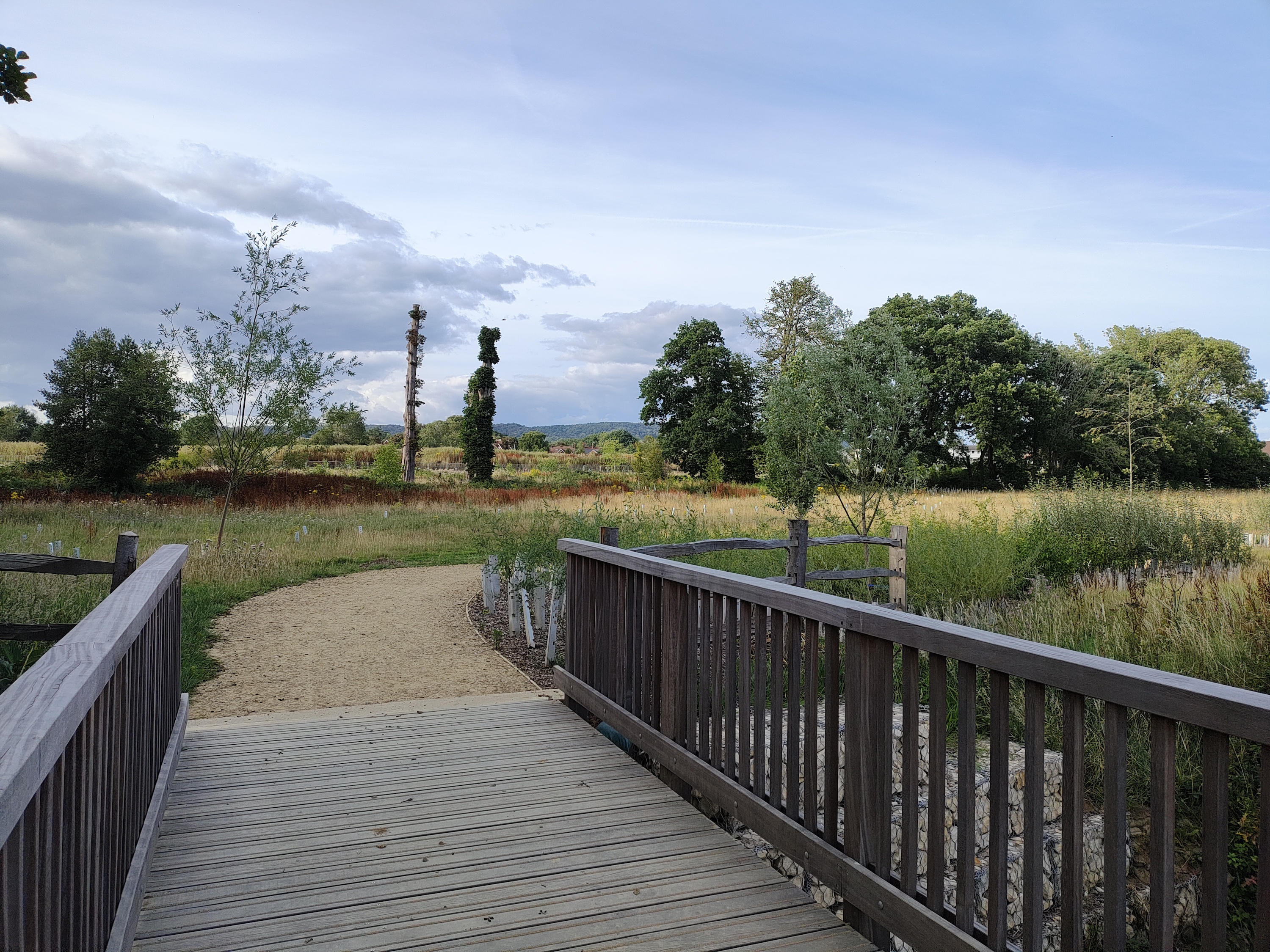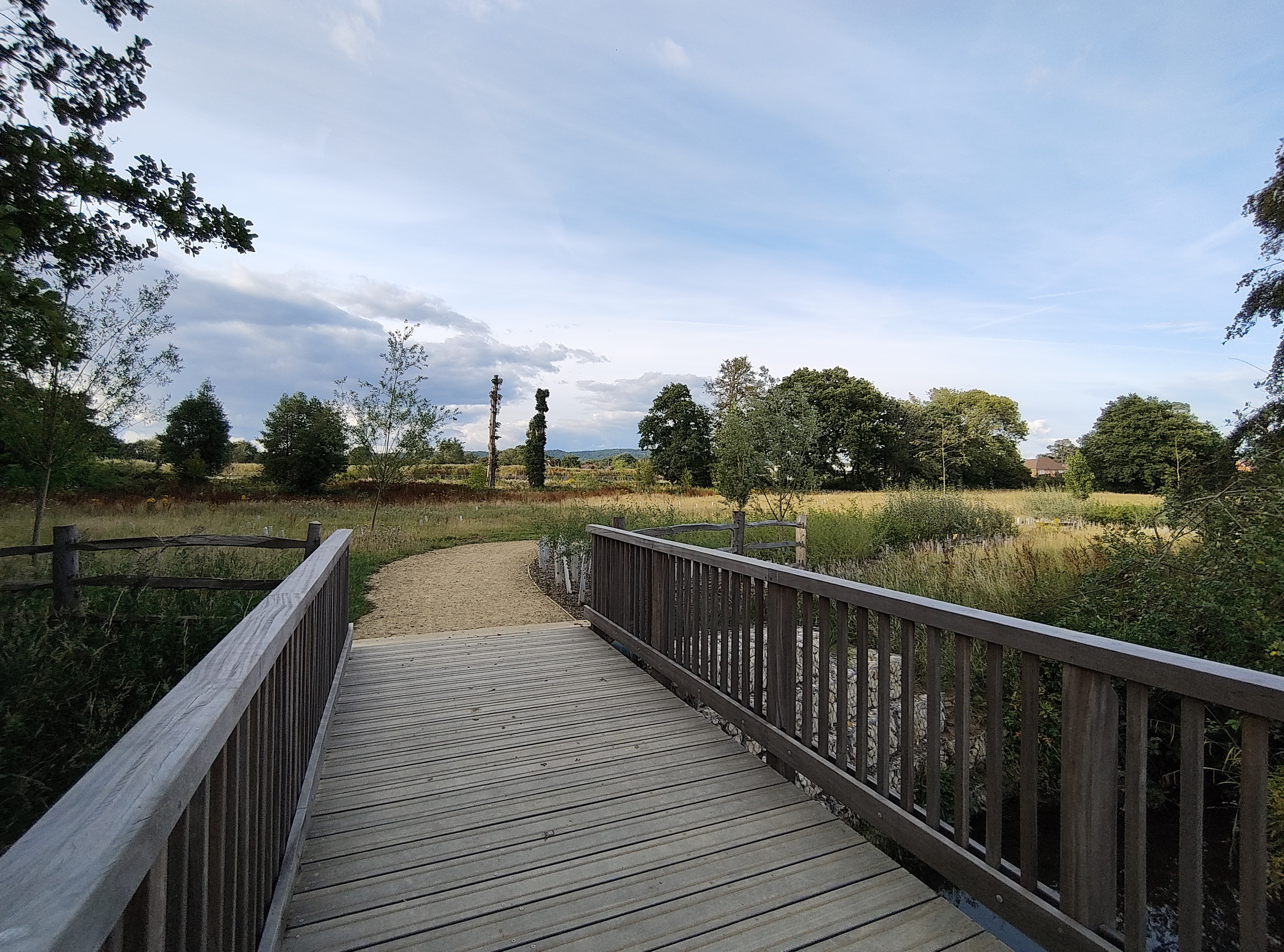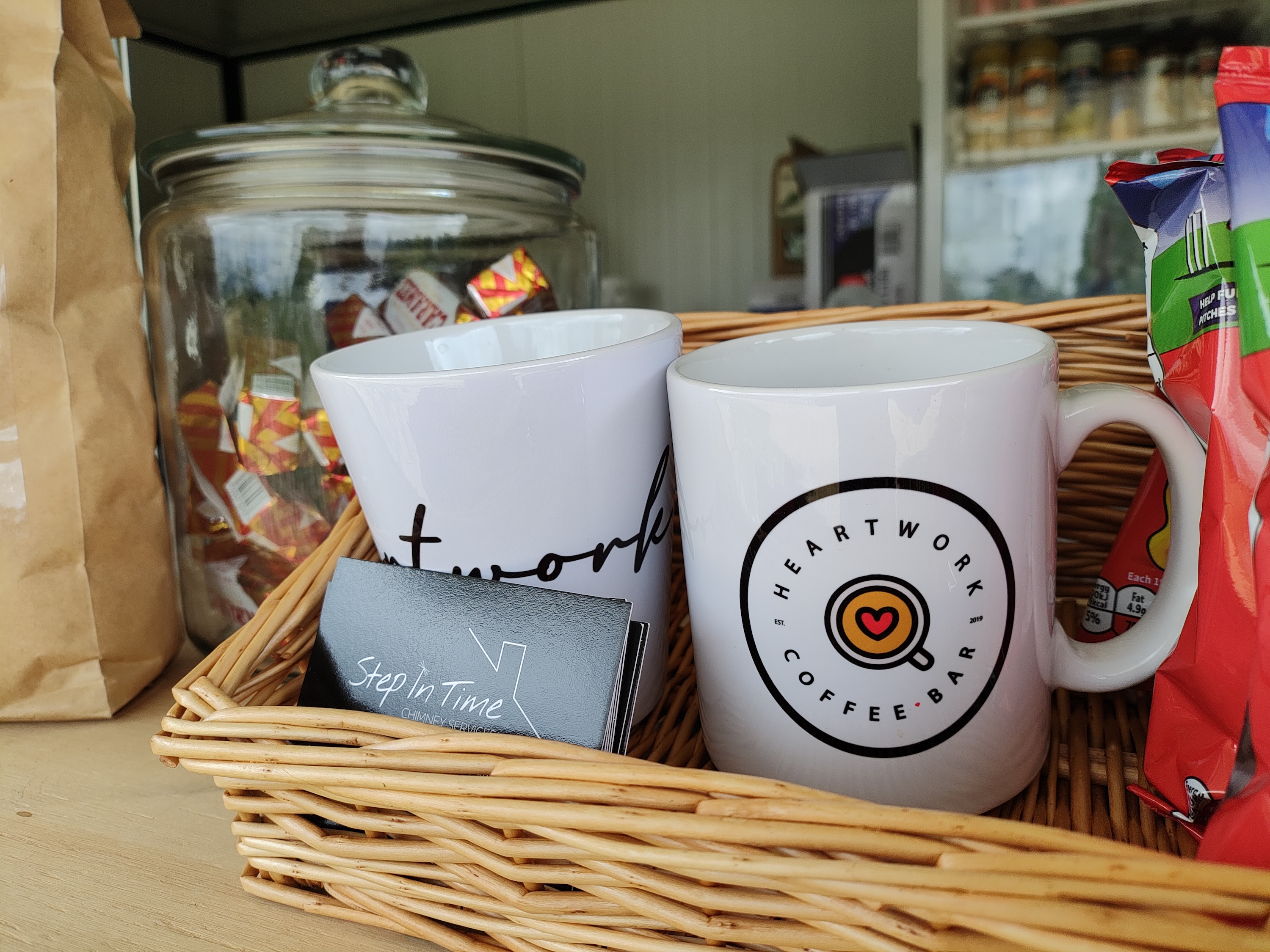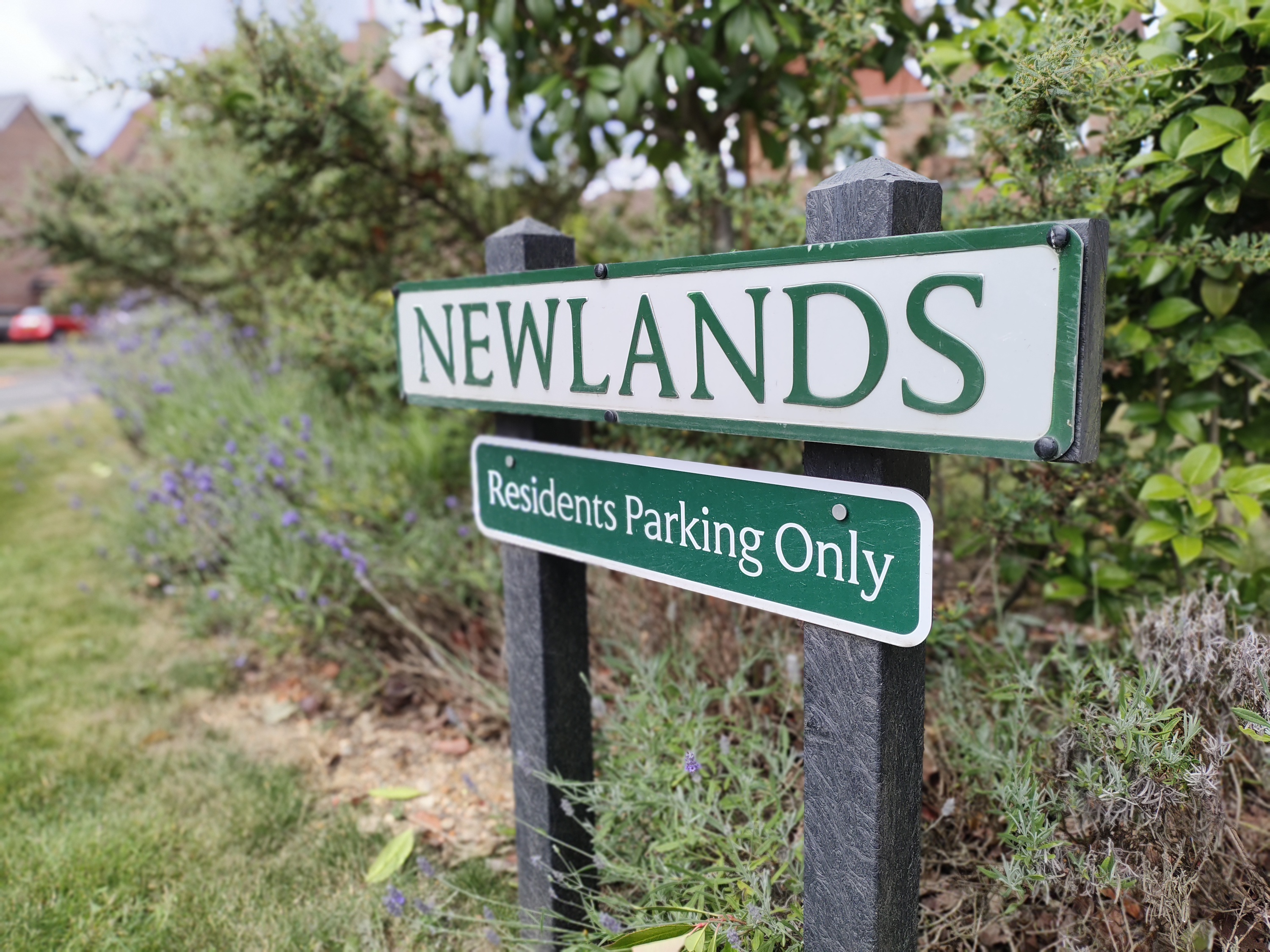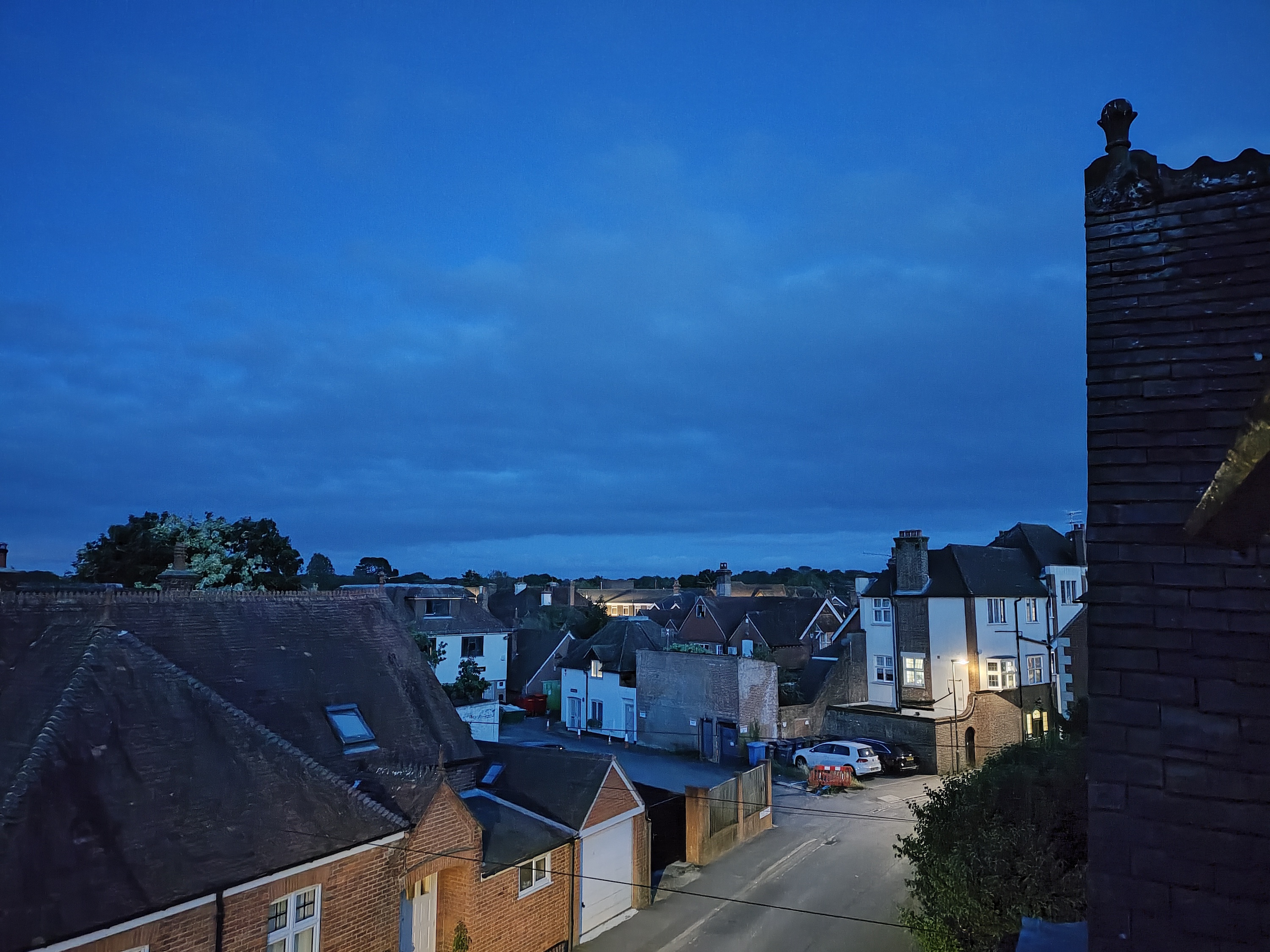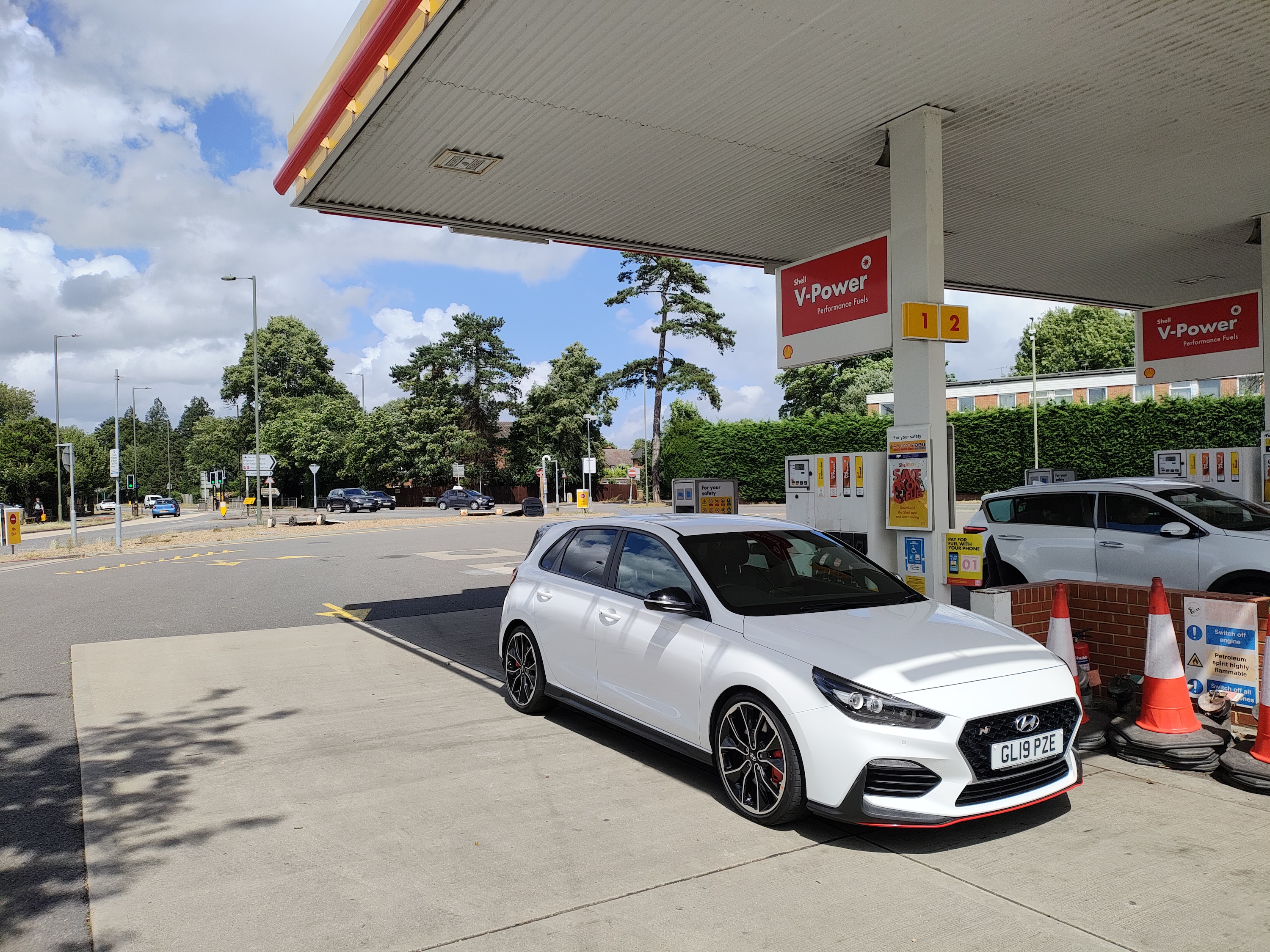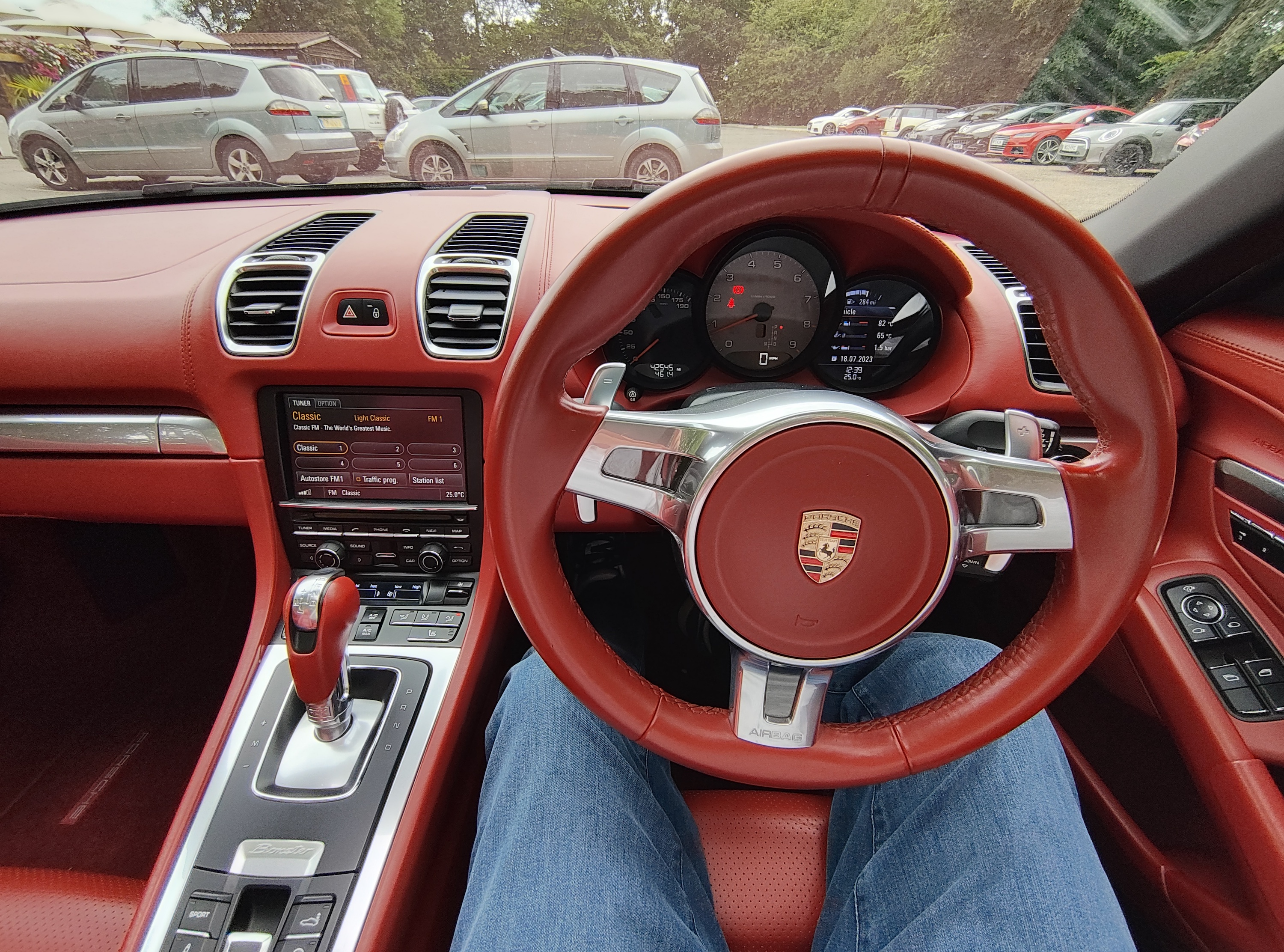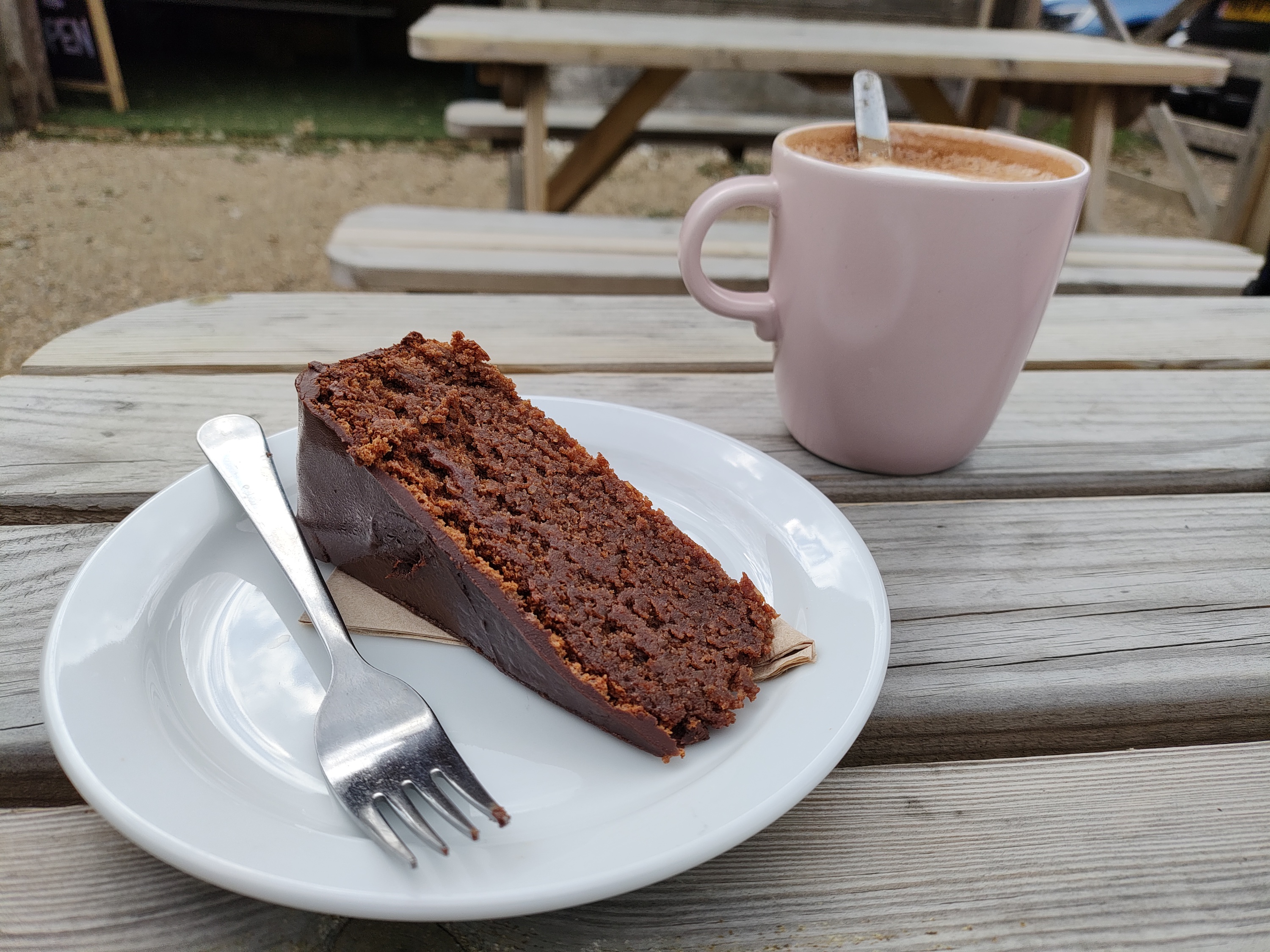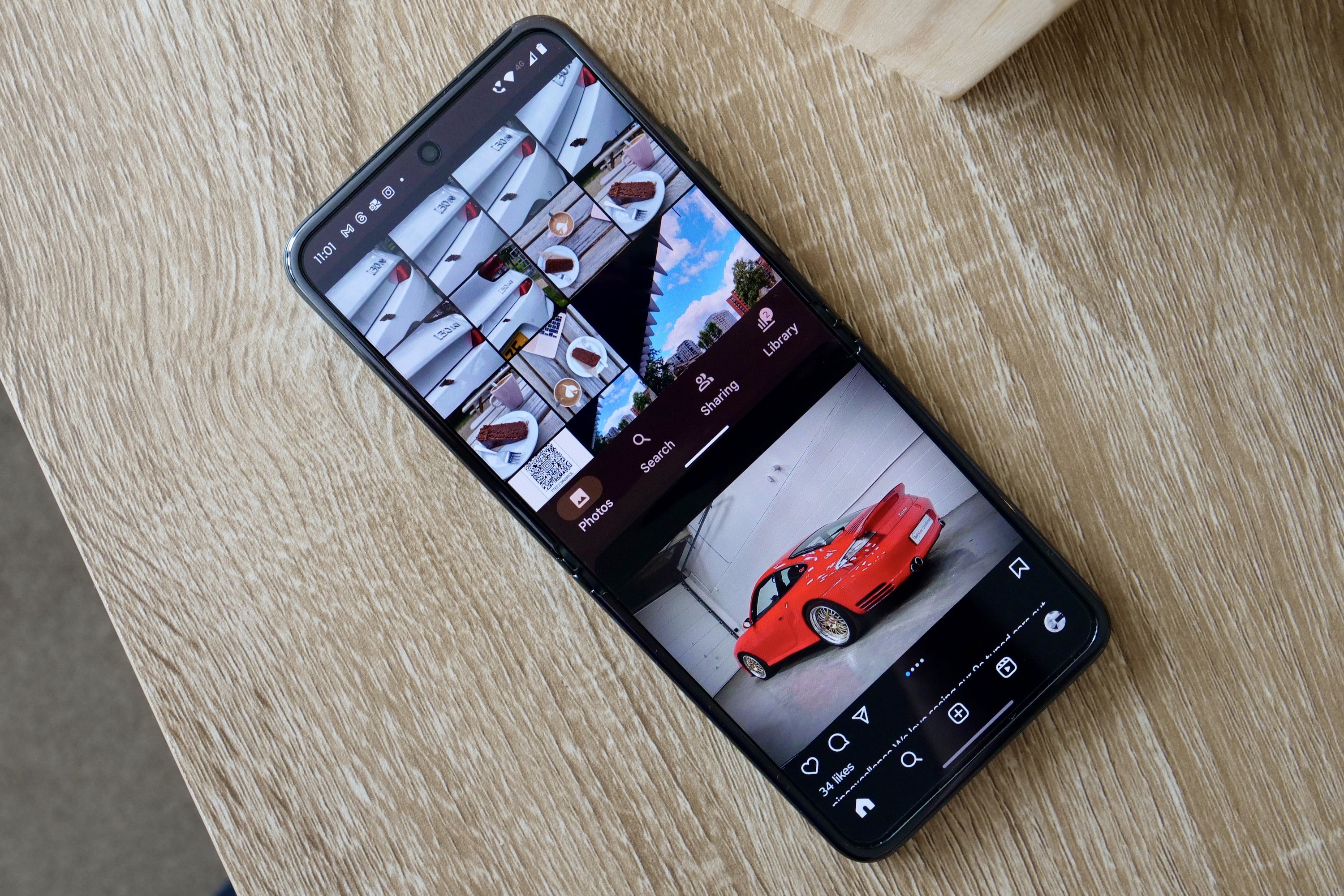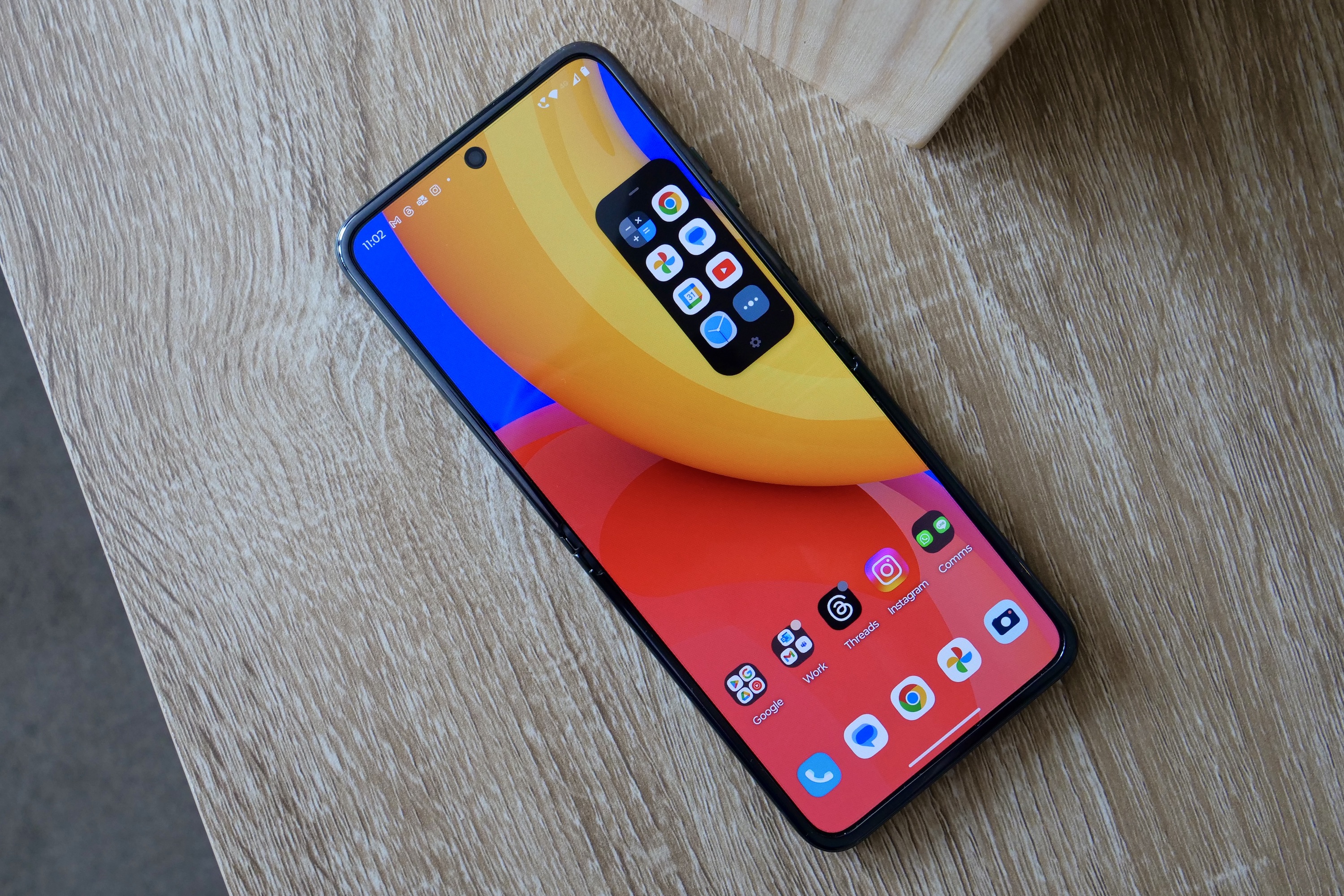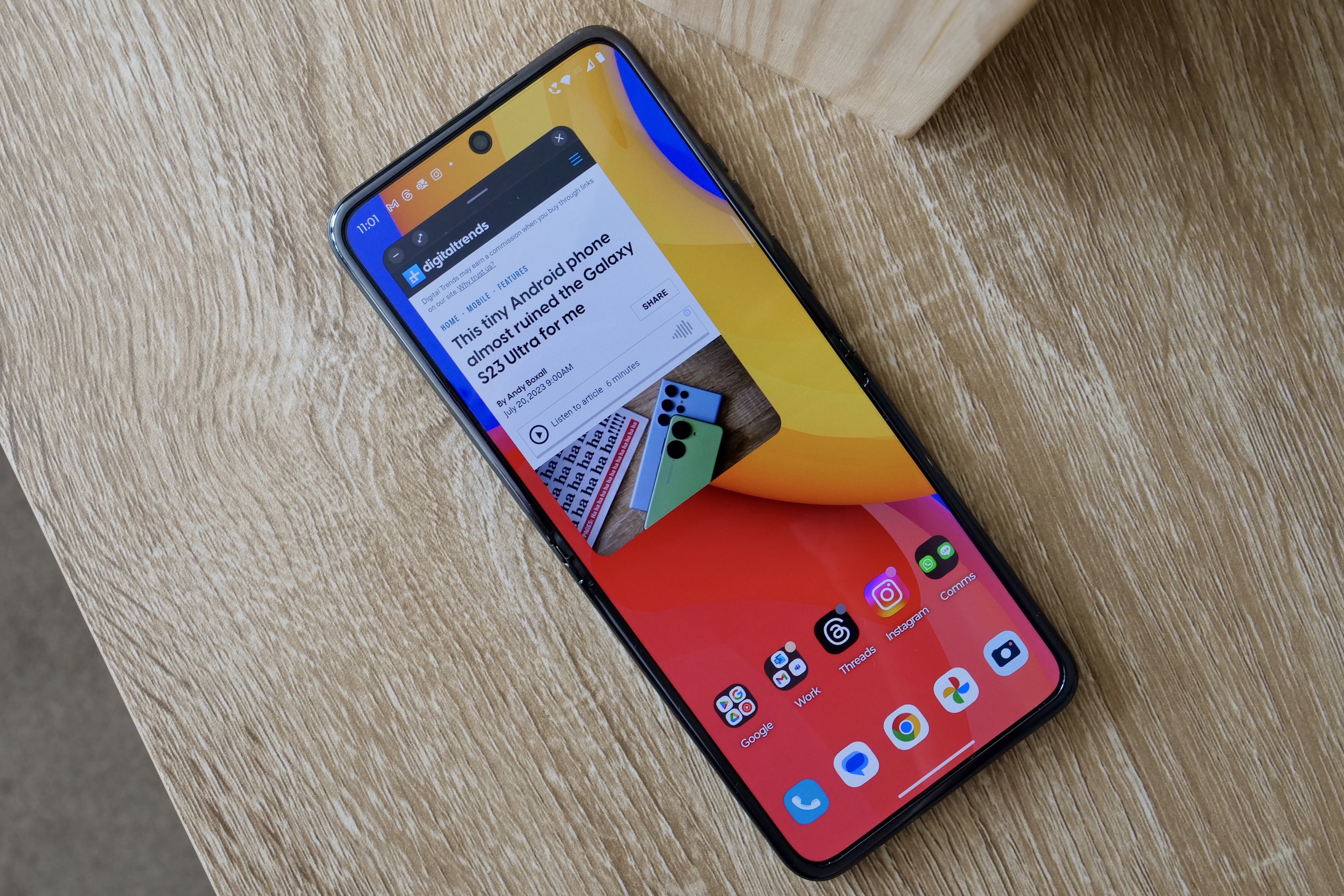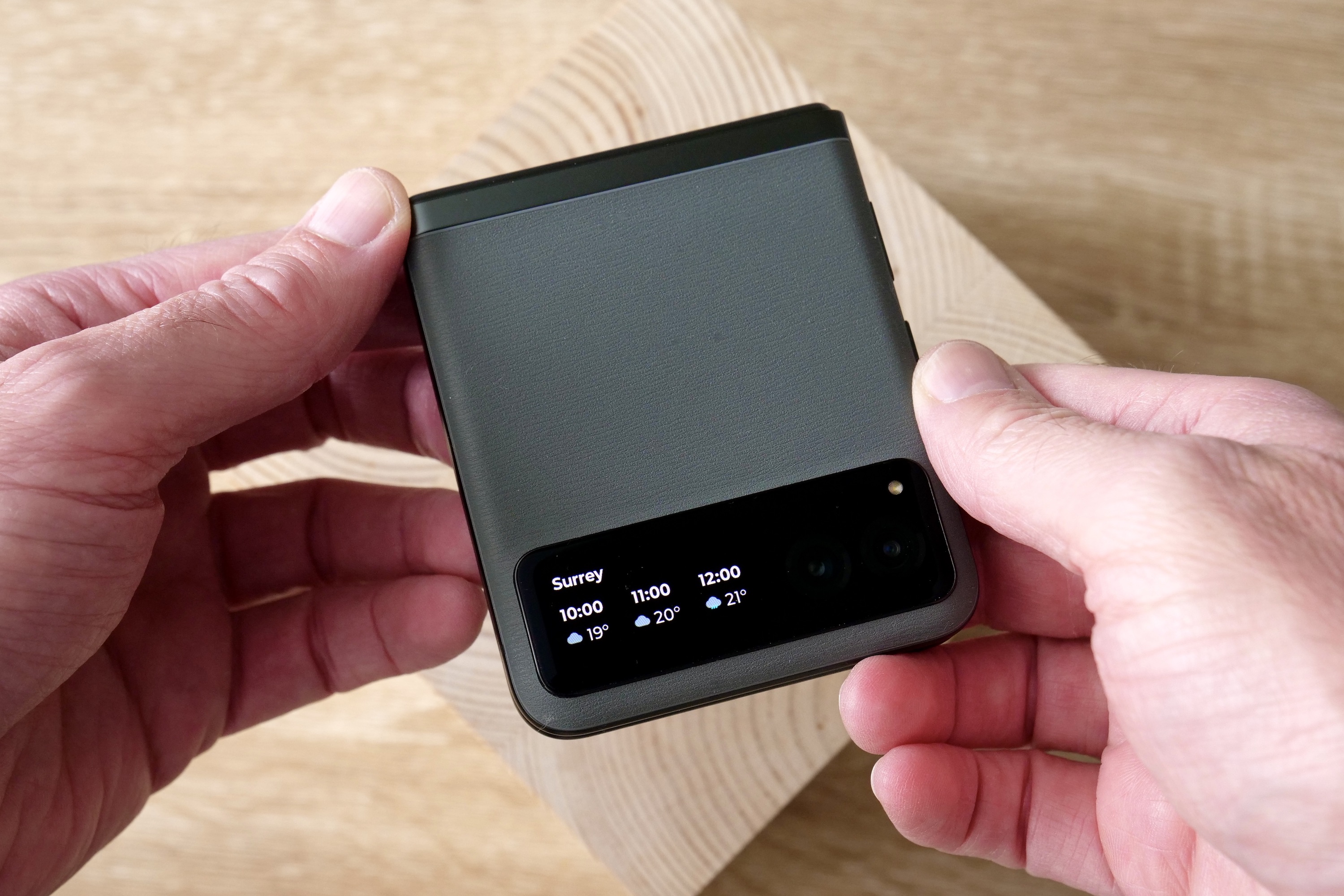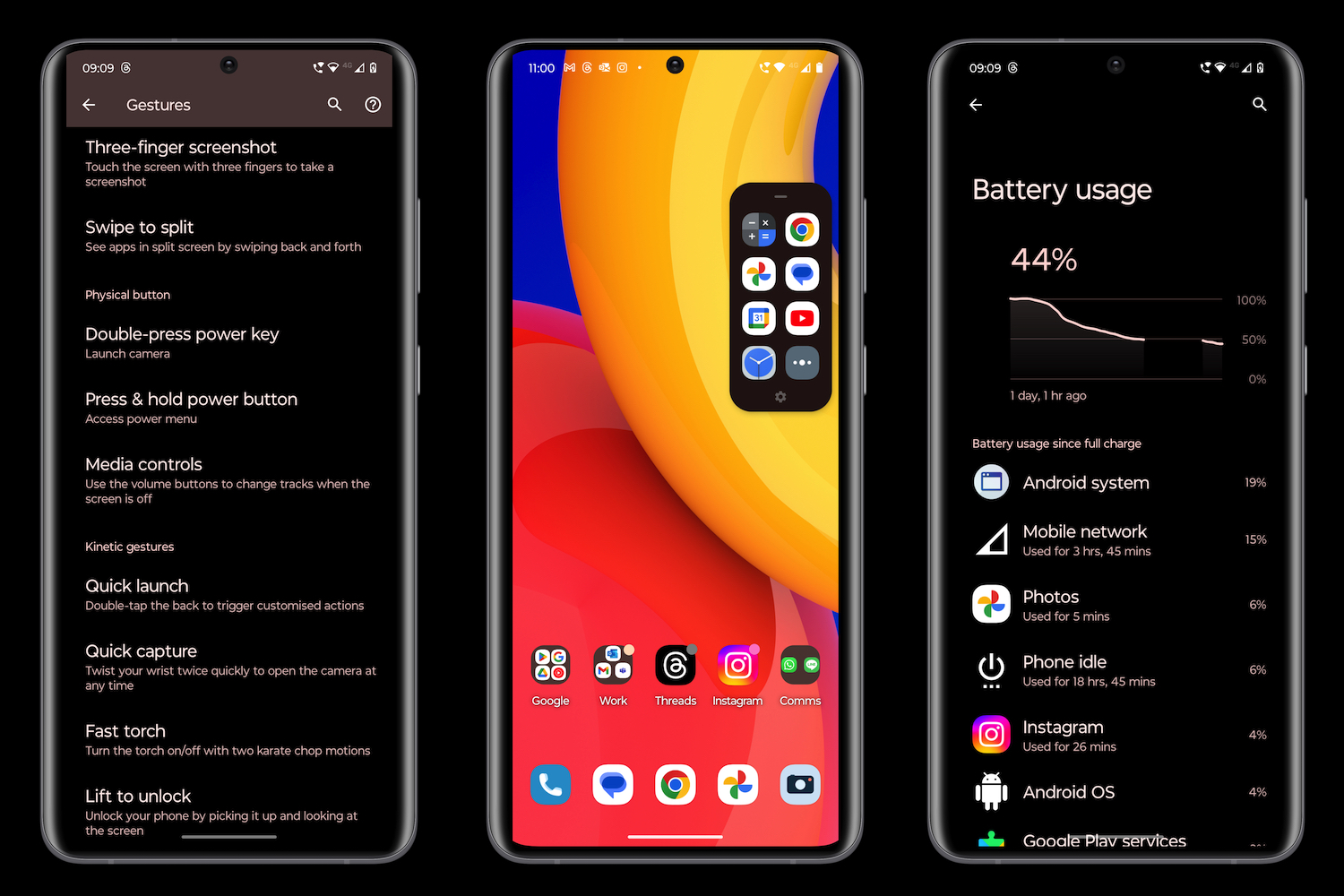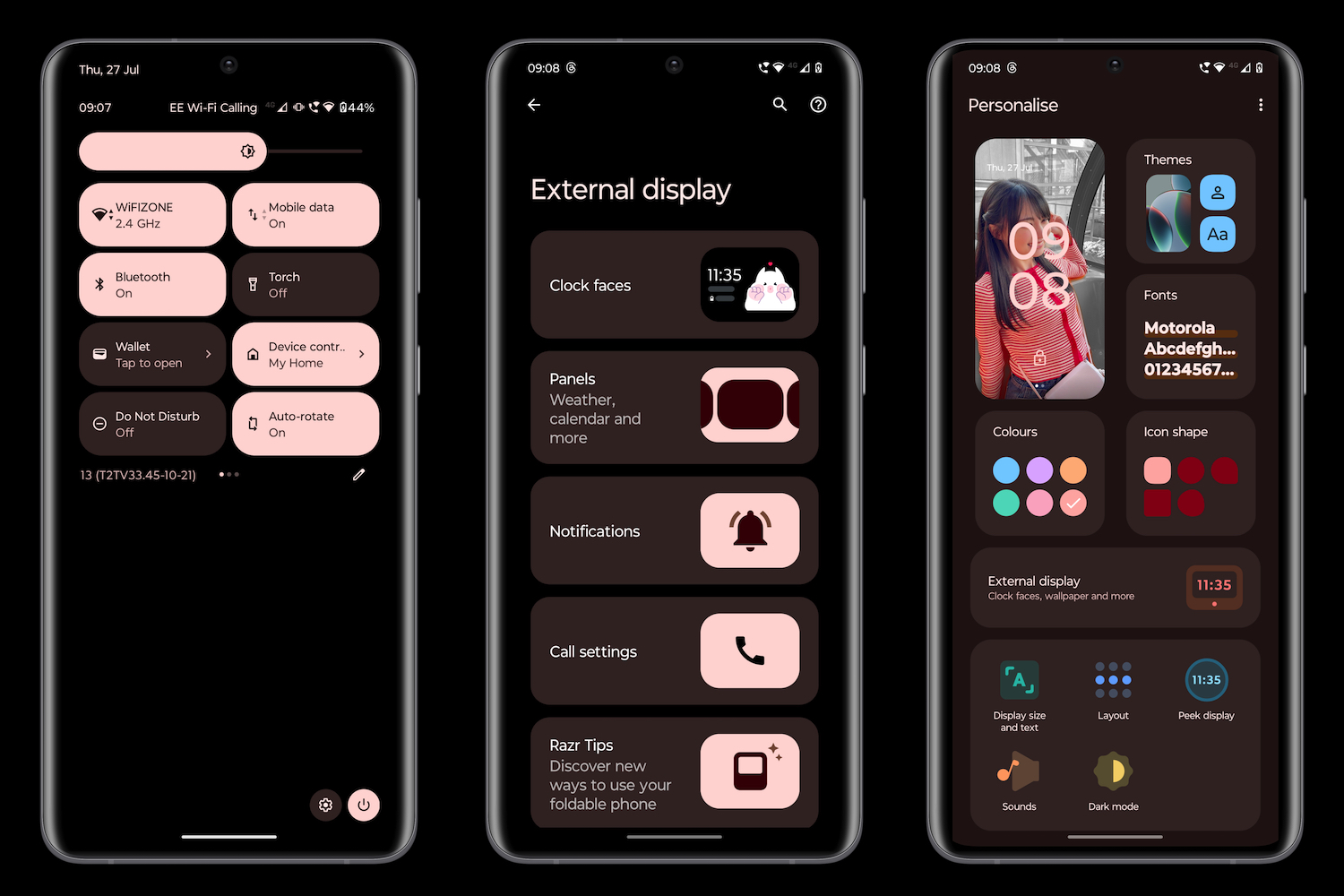
“The light and attractive Motorola Razr 40 is the ideal convenience-first smartphone for every day use, with its folding design, good camera, fast charging, and decent durability.”
- Lightweight and compact
- Camera is great for social media
- Fast battery charging
- Cute Moo character brightens up the cover screen
- Dust and water resistance
- No always-on screen
- Slow wireless charging
- Can get warm when pushed hard
Compact folding smartphones are becoming more complicated as cover screens get bigger and they gain the ability to run full apps, but the Motorola Razr 40 — also known as the Razr (2023) in the U.S. — bucks that trend and keeps the simple formula that has propelled these small folding phones into the mainstream. Don’t for one minute think this is a bad thing — because Motorola’s cheaper folding phone still has everything you need. I’ve really enjoyed using it, and this is why.
Razr (2023) or Razr 40?

Before I get into the review, let’s clear up some confusion about what this phone is actually called.
It’s all Motorola’s fault, as it seems to relish in making things awkward. In the U.K., Europe, and other regions, this is the Motorola Razr 40, and it is the phone I’m reviewing here. However, in the U.S., it will be called the Motorola Razr (2023) when it’s released, where it will join the Motorola Razr Plus. In the U.K., the Motorola Razr Plus is called the Motorola Razr 40 Ultra.
It’s all very silly, as the only difference between the phones is the name and where they are sold. The specifications, design, and everything else are identical. So while this is a review of the Motorola Razr 40, it’s also technically a review of the Motorola Razr 2023. Hopefully, that’s cleared up the confusion over the names.
Motorola Razr 40: design

The last Motorola foldable I used was the Motorola Razr (2022), and the Razr 40 is miles ahead of it in terms of build quality, materials, and design. Ditching the played-out nods to the past it seemed intent on endlessly embracing has given Motorola freedom, and this has lent the Razr 40 its own identity. The metal chassis is surrounded by a soft, durable, tactile vegan leather that doesn’t attract fingerprints or stains — and can even be given a quick scrub to get rid of any marks. My review model is in the Sage Green color, and it looks superb next to the gunmetal gray aluminum of the frame.
It folds without a gap, the hinge is free of the rattles and floppiness of the Razr (2022), and it feels much more like the precise and expertly dampened Samsung Galaxy Z Flip 4. It has the right degree of resistance, so it holds itself open at various angles and feels satisfyingly expensive when you open and close it. There are some creaks and mechanical-type sounds when the hinge is operating, but nothing that causes concern. It all feels very well-engineered and made to last.

The lower third of the front contains a raised glass module with a small cover screen and camera array inside it. There’s a small power key with an integrated fingerprint sensor on the side, along with two small volume buttons. Yes, it’s all a bit on the small side, but the controls are easy to locate and press, although anyone with big fingers may find it requires getting used to. I have also found I accidentally press the power key and put the display to sleep when I’m using the phone due to its placement on the chassis.
It’s incredibly freeing to use a phone that folds up to half its size when it’s not in use.
I want to highlight the durability. The Razr 40 has an IP52 rating, which at first glance is “worse” than the IPX8 found on some other folding phones. However, this isn’t totally accurate. While the water resistance isn’t as comprehensive, it is safe to use in the rain and should be OK with a splash. But more interestingly, the rating shows the Razr 40 has dust resistance. This is very welcome and very unusual in foldables, as dust can kill a folding smartphone pretty quickly — just ask Samsung. A “5” in the IP rating is one step down from the top level and means it has been engineered to avoid harmful dust deposits entering the phone.

Beyond how good the phone looks and feels, the pull for me is the Razr 40’s convenient size and weight. It fits in any pocket, including my shirt pocket, and doesn’t weigh them down excessively. I love the way I can hold it — folded up in the palm of my hand — and how it doesn’t slip and slide about on tables.
It’s just 188 grams, which is light for a modern phone, 7.5mm thick when unfolded, and although it’s 15.8mm thick folded up, the small, square shape masks it really well. It’s incredibly freeing to use a phone that folds up to half its size when it’s not in use, and refreshing to see Motorola give its new range of folding phones a real design identity of their own.
Motorola Razr 40: screens and performance

The 6.9-inch, 144Hz refresh rate inner screen is very smooth and looks fantastic, but it is quite reflective, something that I find is an issue with all folding smartphones and assume it’s down to the ultrathin glass used to protect them. But with a peak brightness of 1,400 nits, it’s no problem outside, even in strong sunlight. I haven’t noticed the crease at all. The 1.5-inch OLED cover screen is very small and displays a selection of widgets that can be swiped through, or you can swipe up to view your notifications. Outside of seeing them, you’ll have to open the phone to do anything meaningful.
It’s obviously too small to run apps, but what boggles my mind, and something I can no longer give Motorola a pass for, is that it’s not an always-on screen. The company argues that this saves battery life, but how much battery can the tiny screen really use up to show a clock and a notification alert? Samsung manages on the Z Flip 4, as does every other non-folding phone apart from a Motorola. It ruins any usefulness the cover screen may have, because if you’re going to tap the screen, swipe up to see notifications, then tap once again to see more detail, you may as well open the phone.

On the positive side, special mention needs to go to Motorola’s character wallpaper which lives on the cover screen. You can see it in our photos, and its name is Moo. Throughout the day, Moo’s animated activities on the screen match what you may be doing — brushing your teeth, working, commuting, or eating — and with a tap, adds in another action like drinking coffee or offering you a bite to eat. Rarely do these features catch my eye, but Moo is incredibly cute and fun. I’m going to miss Moo when I switch to another phone.
I’m going to miss Moo when I switch to another phone.
Unlike the Razr Plus, this model doesn’t use a flagship processor. Instead, it’s a midrange Qualcomm Snapdragon 7 Gen 1, and this is the first phone I’ve used it in. Despite its non-flagship status, it has performed well, happily coping with messaging, calls, apps, and multitasking. The Razr 40 can display one floating window over another or two apps in split-screen mode. Unfortunately, there’s no dedicated media control view like Samsung’s Flex Mode when you watch YouTube videos with the phone half-folded.
I’m reviewing the Razr 40 after the Nothing Phone 2, which has a Snapdragon 8+ Gen 1, and I have not noticed any real performance difference between them for daily tasks. However, it can get quite warm when playing games (even simple ones like Pocket City), shooting video, and when really pushing the phone with multiple apps. It’s not all of the time, though, suggesting the heat buildup may have to do with software optimization, so updates may improve it in the future. It’s never hot, just noticeably warm, so don’t let it put you off.
Motorola Razr 40: camera

There are two cameras inside the main module: a 64-megapixel main camera with optical image stabilization (OIS) and laser autofocus, along with a 13MP wide-angle camera with a 120-degree field of view that also takes macro shots. It can shoot video at up to UHD resolution at 60 frames per second (fps) and take slow-motion videos too. The 32MP selfie camera sits at the top center of the screen when the phone is unfolded.
However, it’s better to use the main cameras for selfies. When the phone is closed, a double press of the power key turns the cover screen into a preview of the viewfinder, and while it’s too small to help with composition, it’s enough to see yourself and take advantage of the better cameras for your selfies. When the phone is open, it can be activated when you take photos too, but it only shows a weird cartoon face that doesn’t seem to perform any function at all.
The main camera is definitely one of Motorola’s better ones. Photos are colorful and lively, with lots of detail and just the right amount of saturation and HDR. They are suited to sharing online without much editing. However, they can be a little soft, and the camera can wash some colors out, resulting in an unnatural look, but this doesn’t happen to every photo.
There’s not always much consistency of exposure between the main and wide-angle camera, but I like the more dramatic tone of the Razr 40’s wide-angle, and the inconsistency is no worse than many other phone cameras at this price. Even the macro camera can take good photos, but the lack of autofocus makes it hit-or-miss if you capture one. Video is fine in good light, but it’s choppy in poor light, and when recording, the viewfinder stutters unnervingly.

The Motorola Razr 40’s camera isn’t quite as good as the Galaxy Z Flip 4’s great camera, but I’ve enjoyed using it. It’s not designed to take on the camera greats like the one on the Google Pixel 7 Pro, and it’s a shame the cover screen is a little underutilized, but overall there’s enough ability to keep you happy and entertained.
Motorola Razr 40: software, calls, and connectivity

The Motorola Razr 40 comes with Android 13 installed, and my review version has the June 2023 security update. The amount of changes to the familiar Android design on Motorola’s side is minimal, and the software is mostly fuss-free. The cover screen doesn’t run full apps, but has a choice of Panels — including the weather, a timer, access to your calendar and contacts, plus a media player and volume control. The screen is responsive and fast.
I’ve had no problem with app compatibility when using the open phone, and the speed is there to switch between them as you want. There’s a shortcut panel that slides in from the side of the screen, and it’s easy to activate split-screen multitasking. The camera app is not only quick, but it also has my favorite shortcut — a double press of the power key. Videos look good on the screen, and the speakers are loud without entirely sacrificing clarity.
According to Motorola, the Razr 40 is going to get some decent ongoing update support. It’s promising three years of major OS updates and four years of security updates. This is shorter than what Samsung and OnePlus offer, but it matches Google’s support and is reasonable for an upper midrange phone. The phone has happily pulled in 4G and 5G signals, calls sound clear, and I’ve successfully linked the Bluetooth to wireless earbuds and a Tag Heuer Connected Calibre E4 smartwatch.
The effortlessness of the software and friction-free user experience matches the convenience of the shape and design of the Razr 40, and it is such a pleasure to use.
Motorola Razr 40: battery and charging

It’s a 4,200mAh battery inside the Razr 40, making it larger than the one fitted to the Samsung Galaxy Z Flip 4, Galaxy Z Flip 5, and its more expensive Moto folding sibling, the Razr Plus. My varied use extends to around three or four hours of screen time per day, primarily on Wi-Fi, and this takes around half of the standby time from the battery. However, it’s usually below 50% by the end of the day, making two full days of careful use unlikely.
That said, I’ve not had any concerns the battery wouldn’t last me a full day, even if it involved playing games and watching videos. Use the phone hard, and it definitely won’t last two full days. A 5G connection appears to tax it quite a lot, and you should expect to only get three-to-four hours of screen time from a single charge when using it.

The Motorola Razr 40 supports 30-watt charging, and using the included Turbo Power charger block and USB cable, it took 30 minutes to reach around 70% — and on to fully charged in approximately 50 minutes. This is practically half the time it takes to recharge the Galaxy Z Flip 4, and even faster than the Oppo Find N2 Flip. However, phones like the OnePlus 11 charge much faster.
It also has wireless charging, but at just 5W, it’s not going to break any speed records, making it only suitable to keep the battery topped up when a charger is available. Battery life is often a sticking point on small foldables, which don’t have much space inside for massive cells, but the Razr 40 is one of the better examples available, with at least a full day’s use and less than an hour to recharge.
Motorola Razr 40: price and availability

The Motorola Razr (2023) has been announced for the U.S., but it has not been given a release date or price at the time of writing. The model reviewed here is the Motorola Razr 40, which is available in the U.K. for 800 British pounds, which is around $1,039.
However, expect the Razr (2023) to cost significantly less than this in the U.S. For comparison, the flagship Motorola Razr Plus costs $1,000, and its U.K. equivalent, the Motorola Razr 40 Ultra, costs 1,050 pounds — or about $1,363.
The Razr 40/Razr (2023) does battle with the Galaxy Z Flip 4. Even though the Galaxy Z Flip 5 is now out, it costs $1,000, and the previous Samsung Flip can be found for $900 or less. Samsung’s software commitment is longer than Motorola’s, and the overall construction and hinge do feel higher quality. However, the Razr 40’s battery and charging are superior, and it’s a brand new device. It’s a very difficult choice to make, and both are excellent purchases.
Motorola Razr 40: verdict

I love the Motorola Razr 40. There’s very little fuss or pretentiousness to it, and it’s so much better for it. The compact flip design is its big feature, and Motorola has done the right thing by not overcomplicating everything else — and keeping the price down. This is a pick-up-and-use-every-day smartphone, with no need to learn dozens of features you’ll probably never use . And you also won’t be bothered by crushingly short battery life, or be upset by a rubbish camera. It’s reliable, good-looking, and fun.
Using the Razr 40 for the last few weeks has been great, as it’s so convenient to carry around and use. On the negative side, I am frustrated by the decision to not make the cover screen show the time and notification alerts all the time, the wireless charging is a bit of a token effort, and the processor doesn’t seem to enjoy being pushed hard. Outside of this, it’s a fantastic buy and currently about the cheapest way to get into foldable smartphones. Motorola’s on a roll in 2023, and I recommend taking advantage of it.
Editors' Recommendations
- The best Samsung Galaxy Z Fold 5 cases: 10 best ones so far
- This folding phone is lighter than the iPhone 14 Pro Max
- The best folding phones in 2023: our 4 favorite foldables right now
- iPhone 15: release date and price predictions, leaks, rumors, and more
- Is this our first look at the OnePlus Fold? I sure hope so

